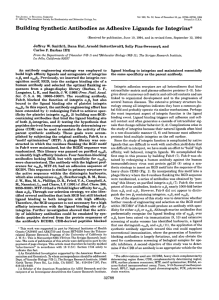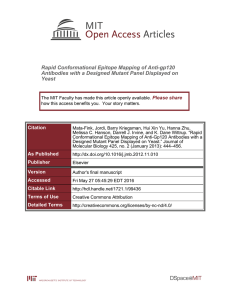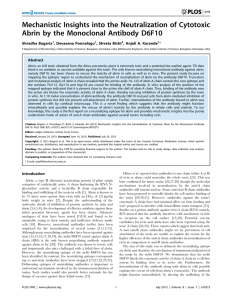Anti-Protein L antibody (FITC) ab63504 Product datasheet Overview Product name
advertisement
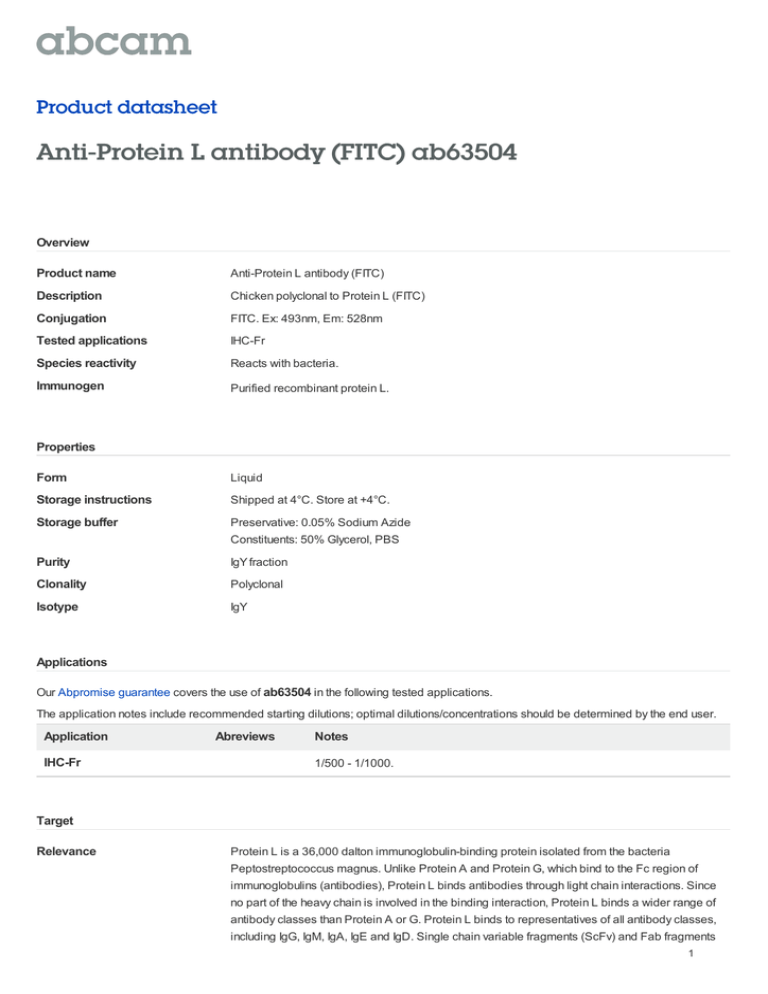
Product datasheet Anti-Protein L antibody (FITC) ab63504 Overview Product name Anti-Protein L antibody (FITC) Description Chicken polyclonal to Protein L (FITC) Conjugation FITC. Ex: 493nm, Em: 528nm Tested applications IHC-Fr Species reactivity Reacts with bacteria. Immunogen Purified recombinant protein L. Properties Form Liquid Storage instructions Shipped at 4°C. Store at +4°C. Storage buffer Preservative: 0.05% Sodium Azide Constituents: 50% Glycerol, PBS Purity IgY fraction Clonality Polyclonal Isotype IgY Applications Our Abpromise guarantee covers the use of ab63504 in the following tested applications. The application notes include recommended starting dilutions; optimal dilutions/concentrations should be determined by the end user. Application IHC-Fr Abreviews Notes 1/500 - 1/1000. Target Relevance Protein L is a 36,000 dalton immunoglobulin-binding protein isolated from the bacteria Peptostreptococcus magnus. Unlike Protein A and Protein G, which bind to the Fc region of immunoglobulins (antibodies), Protein L binds antibodies through light chain interactions. Since no part of the heavy chain is involved in the binding interaction, Protein L binds a wider range of antibody classes than Protein A or G. Protein L binds to representatives of all antibody classes, including IgG, IgM, IgA, IgE and IgD. Single chain variable fragments (ScFv) and Fab fragments 1 also bind to Protein L. Despite this wide binding range, Protein L is not a universal antibodybinding protein. Protein L binding is restricted to those antibodies that contain kappa light chains and it is only effective in binding certain subtypes of kappa light chains - about 65% of human immunoglobulins carry kappa light chains. Given these specific requirements for effective binding, the main application for immobilized Protein L is purification of monoclonal antibodies from ascites or cell culture supernatant that are known to have the kappa light chain. Protein L is extremely useful for purification of VLkappa-containing monoclonal antibodies from culture supernatant because it does not bind bovine immunoglobulins, which are often present in the media as a serum supplement. Also, Protein L does not interfere with the antigen-binding site of the antibody, making it useful for immunoprecipitation assays, even using IgM. Cellular localization Cell surface Please note: All products are "FOR RESEARCH USE ONLY AND ARE NOT INTENDED FOR DIAGNOSTIC OR THERAPEUTIC USE" Our Abpromise to you: Quality guaranteed and expert technical support Replacement or refund for products not performing as stated on the datasheet Valid for 12 months from date of delivery Response to your inquiry within 24 hours We provide support in Chinese, English, French, German, Japanese and Spanish Extensive multi-media technical resources to help you We investigate all quality concerns to ensure our products perform to the highest standards If the product does not perform as described on this datasheet, we will offer a refund or replacement. For full details of the Abpromise, please visit http://www.abcam.com/abpromise or contact our technical team. Terms and conditions Guarantee only valid for products bought direct from Abcam or one of our authorized distributors 2
![Anti-MHC class II I E kappa antibody [17-3-3.4] (FITC)](http://s2.studylib.net/store/data/012449552_1-911718e211d39c6bde4030f3e4006179-300x300.png)
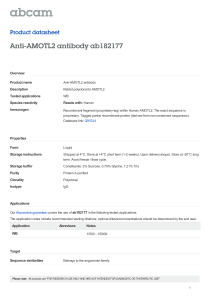
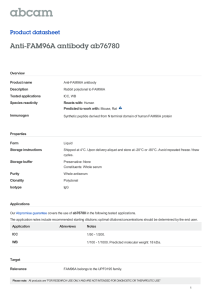
![Anti-CD20 antibody [B9E9] (FITC) ab1169 Product datasheet 1 Image Overview](http://s2.studylib.net/store/data/012441407_1-26543378c4d72b0d7cc642a020547fda-300x300.png)
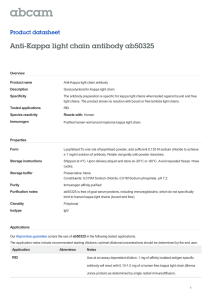
![Anti-Ctip2 antibody [25B6] (FITC) ab123449 Product datasheet 3 Images Overview](http://s2.studylib.net/store/data/012631680_1-edde6140d469047e0dd8c69be5494c03-300x300.png)

